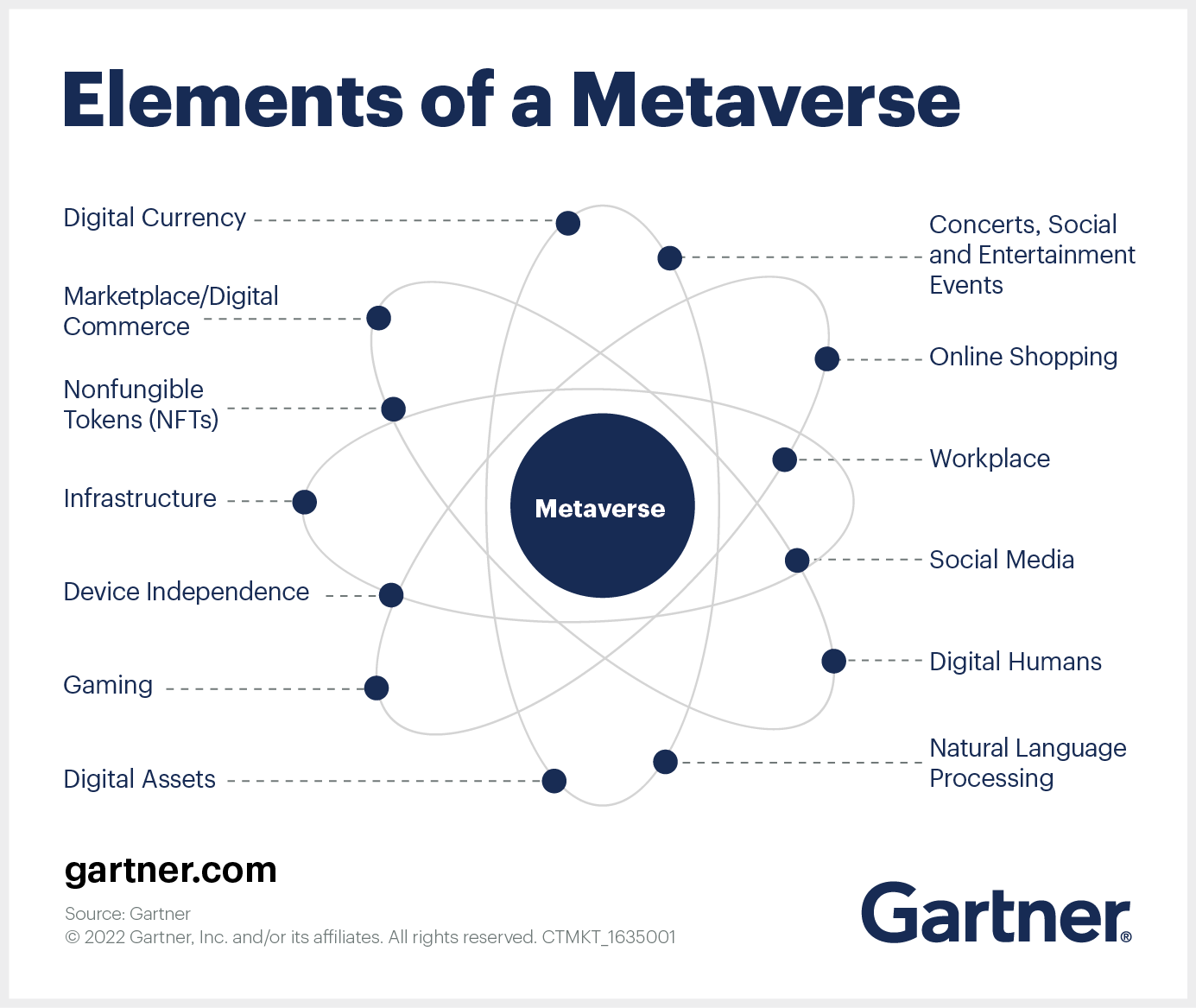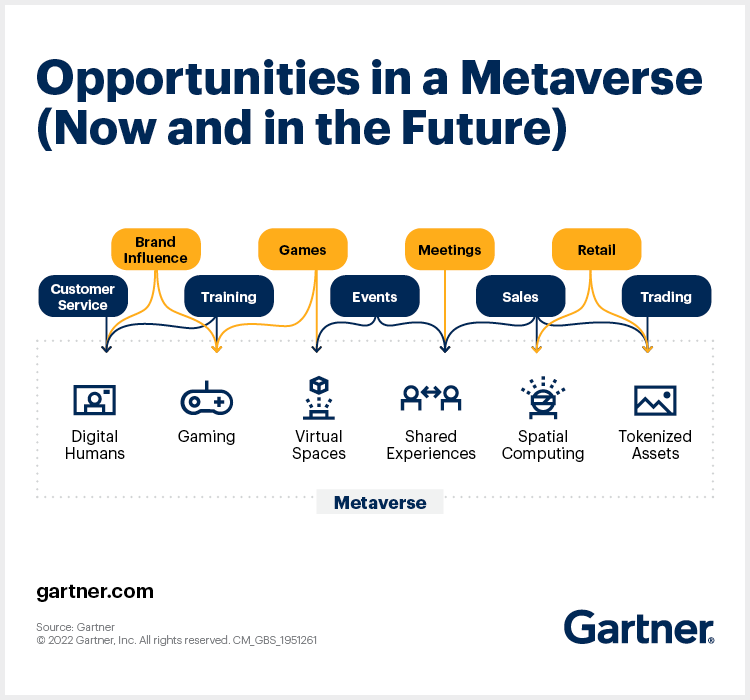04 Jan Future perspective of Metaverse and artificial intelligence
Future Perspective of Metaverse and artificial intelligence
This article covers “Daily current affairs for UPSC” and the topic is about ‘Metaverse and artificial intelligence’ which is in news, it covers the “scientific innovations and discoveries” In GS-3, and the following content has relevance for UPSC.
For Prelims: Artificial intelligence, facts about Metaverse, Chatbots, and types
For Mains: GS-3, GS-4, Significance of Artificial intelligence and Metaverse, ethical concerns associated with it.
Why in news:
Although 2022 wasn’t the best year for IT companies, new technologies related to the Metaverse and AI (Artificial Intelligence) may develop in the future and bring both opportunities and challenges.
Many of the changes in demand that occurred during and after the Covid-induced lockdowns were visible in 2022.
Near chaos in the majority of Silicon Valley businesses, particularly those in the internet industry marked the end of 2022.
The following 4 developments make metaverse a strategic technology trend:
- Web3, a fresh set of technologies for creating decentralized web apps that give users authority over their own identity and data, is the first innovation. When the value is shared in some way between individuals, groups of people, or both, Web3 and the metaverse work best together.
- Spatial computing, which is a three-tiered technological stack that enables users to interact with the nexus of the real and digital worlds, is the second innovation.
- The third innovation is the digital twin of a person (DToP), which not only replicates an individual but also enables near-real-time synchronized multipresence, or the capacity to be present in several locations simultaneously in both digital and physical settings.
- The fourth innovation is a digital twin of a customer (DToC), a subclass of DToP, which simulates, learns to imitate, and anticipates behavior. Customers can be specific persons, character types, social groups, or even machines.
Opportunities and Challenges of Meta-AI About to face
Increased AI Pervasiveness:
- ChatGPT has demonstrated to the world that conversational AI is a concept whose time has come.
- In addition to being able to “admit its mistakes, challenge false premises, and refuse unsuitable requests,” the ChatGPT can also “answer follow-up inquiries.” However, the majority of these AI components are now found in independent products, which makes them more of a toy than a useful tool.
- This intelligence will be seen incorporated into more daily-used products by 2023, such as Gmail, which will not only auto-suggest but also write the next email to the concerned person.
Further than Social Media:
- With an audience that is getting younger and more digitally native, Twitter and Facebook are fighting to stay relevant. Their ideas of social interaction are significantly dissimilar, frequently lacking text and noticeboard actions.
- For instance, Meta intends to be the social connection when users, if any, move to the Metaverse and are aware that it will need to go beyond its current social media platforms.
- But there’s a chance that won’t change anytime soon. The social media arena appears to be developing a gap until then, which is being filled for the time being by users who only post brief videos. But that fad will pass, and not all platforms perform well in that market.
Greater Regional, Darker Social Bubbles:
- The Internet is getting more multilingual and regional as it grows in popularity, especially in developing nations like India.
- The availability of smaller, regional languages is becoming more of a concern for platforms like Google as the English-language internet appears to have reached a plateau worldwide.
- In addition to being a technical challenge, this offers a chance to test out cutting-edge innovations that can automatically adapt online material for these new users.

Elements of a Metaverse
Future of metaverse
- Extended reality (XR) may be the solution for virtual collaboration and communication as hybrid workforces become the norm and travel is still not as convenient as it once was.
- A new word called “XR” is being used to refer to all immersive technologies, including augmented reality (AR), virtual reality (VR), mixed reality (MR), and future developments.
- By fusing the virtual and “real” worlds together or by generating a completely immersive experience, all immersive technologies expand the reality we experience.
- It may be up to businesses to provide headsets and other equipment to their staff for regular XR meetings as these virtual interaction tools are currently highly pricey.
- The initial implementation of this would resemble an improved form of video conferencing with the addition of interaction with virtual objects.
- Regular users of the Metaverse should have access to a few more commercial versions this year. The difficulty will be in creating hardware that allows access to these virtual worlds without driving users into financial ruin. A cheap gadget that makes it simple for consumers to log into the Metaverse could be the major disruptor; it might even be a smartphone.

Opportunities in a Metaverse
Current Applications
- E-commerce: By bridging the gap between the real world and the virtual one, it can combine online and offline trade. This implies that consumers will be able to virtually experience the real world through the metaverse, making online buying more practical.
- Businesses would gain a lot from this technology because it has the potential to increase their customer base and provide feedback on new items, guiding them in the right way for the future.
- Despite geographical constraints, brands can engage with a worldwide audience through Metaverse in an online business framework.
- Enhancing Skills: Because of its potential for creating novel experiential learning scenarios, metaverse has the potential to significantly contribute to skill enhancement remotely.
- Virtual tourism: With the 360° virtual tour, viewers can virtually visit the selected destination in addition to seeing it being recorded there with lifelike effects.
- For instance, the “Try before you Fly” virtual reality vacation program enables would-be travelers to virtually travel to their favorite locations.
- Education & Learning: The benefits of this technology in combination with VR have elevated the learning experience to a new, high standard. Enhanced and superior information materials are now available for students to use while watching live experiments.
- Microsoft’s Mesh, a mixed-reality platform where instructors, staff, and students can interact with their 3D avatars, is another example of the Metaverse.
- Healthcare: Patients and doctors can communicate in virtual, three-dimensional clinics thanks to the telemedicine and telehealth concept, which was inspired by the pandemic in the Metaverse.
AI-related ethical concerns:
- Privacy and surveillance, bias or discrimination, and maybe the philosophical problem of the function of human judgment are some of the legal and ethical problems that AI brings to society. As a result of its use, worries have been raised about more recent digital technologies becoming a new source of inaccuracy and data breaches.
- The socio-political and economic ramifications of AI are raising concerns, and these worries about the coexistence of these developing technologies and fundamental elements of contemporary democracies represent the other side of this technological revolution.
- As a result, the deployment of AI responsibly and safely is moving to the forefront of the technological revolution.
- In India, constitutional morality was intended to serve as the foundation for AI ethics, elevating our constitutional rights and ethos to the position of prime importance for the responsible use of AI.
Principles of responsible AI:
- Safety and Reliability: AI systems need to be reliable for their intended purposes and have built-in security measures to protect stakeholders.
- Equality: When developing AI systems, it is important to keep in mind that similar persons in similar situations should be treated equally.
- Principle of Transparency: An AI system’s design and training are essential to its operation. To guarantee that the deployment of the AI system is objective, accountable, and devoid of prejudice or inaccuracies, the system must be audited and capable of external examination.
- Principle of Responsibility: Because there are many parties involved in creating, implementing, and using an AI system, the accountability structures for any negative impacts, harms, or damages caused by the AI system must be spelled out in a way that is easily accessible to the general public.
- Protection and Upholding of Positive Human Values: This principle is concerned with the potential negative consequences of AI systems through the collection of personal information for profiling and the usage of AI systems in ways that violate fundamental rights.
- Inclusion and Non-Discrimination: AI systems must be built to be inclusive of all stakeholders and must not discriminate by bias between stakeholders on issues of education, employment, access to public areas, etc. based on religion, race, caste, sex, descent, place of birth, or domicile.
- AI systems must ensure that data subjects’ personal information is secure and protected so that only authorized individuals can access it for the purposes that have been identified as being essential. This must be done within a framework that provides enough protection to ensure the process.
Way Ahead:
- Reducing the Digital Divide: In order for participants to engage meaningfully in online communities while consciously navigating harmful content and behaviors, governance mechanisms for virtual worlds would need to be supported with strengthening and scaling efforts to promote digital literacy, safety, and wellbeing.
- Policy Support: The government should now develop the best possible policy framework to support its operations and use the metaverse to provide public services.
- Information accessibility, information use, and information receptivity must be the government’s main concerns.
- Secure and Safe Metaverse Ecosystem: To handle the unique features of safety, privacy, and security inside the DNA of this technology, effective ecosystems must be developed and regulated.
- To overcome any potential legal obstacles, the development of a citizen-friendly meta-governance infrastructure will require the cooperation of specialists from diverse fields, including designers, business model experts, and attorneys. It can also be necessary to include the private sector.
- Global Cooperation: We are catching a glimpse of a more technologically advanced, borderless society full of promise as the metaverse continues to grow.
- While this new world is still expanding, we need to be mindful of the issues it poses with each new development and anticipate universally enforceable laws.
- ICT is used in e-governance to distribute critical information to a specific audience. The necessary vital data can be supplied by meta-help desks or meta-divisions within a certain ministry or by other government organizations.
- Applications with open and informed consent: The data processing and safety practices used by technology corporations will need to be more accountable and open.
- To avoid unregulated data processing and collection for commercial advantage, it will be crucial to promote an informed consent-based approach while collecting personal data and adhere to the principles of data minimization and purpose limitation.
Source:
Download the PDF now:
Plutus IAS current Affairs eng med 4th Jan 2023
Daily Current Affairs for UPSC
From today Read the best daily current affairs for the UPSC examination for Plutus IAS. Reading daily current affairs helps the aspirants for taking the preparation of the UPSC examination. Also, get the weekly, and monthly current affairs for IAS exam preparation.




No Comments